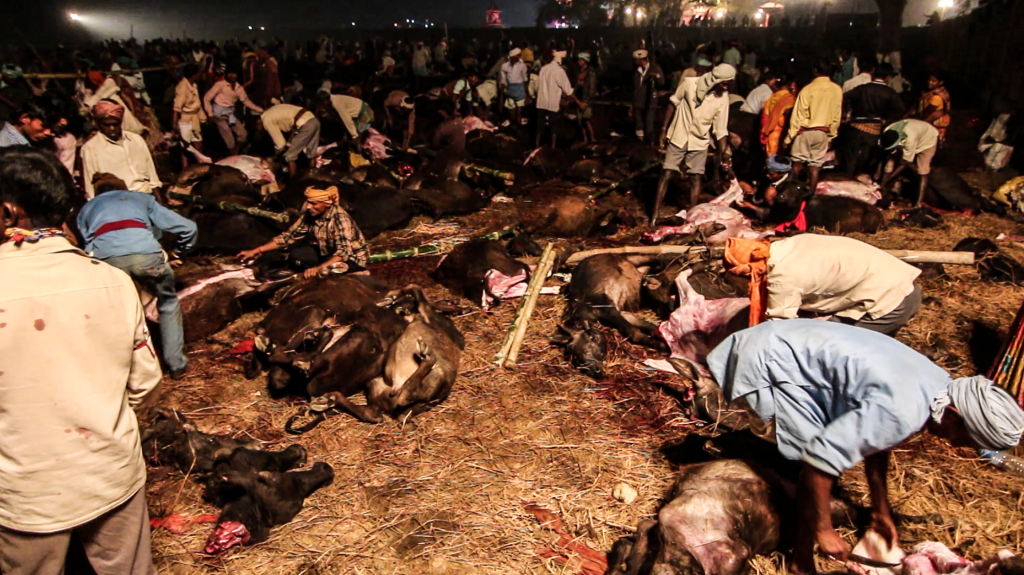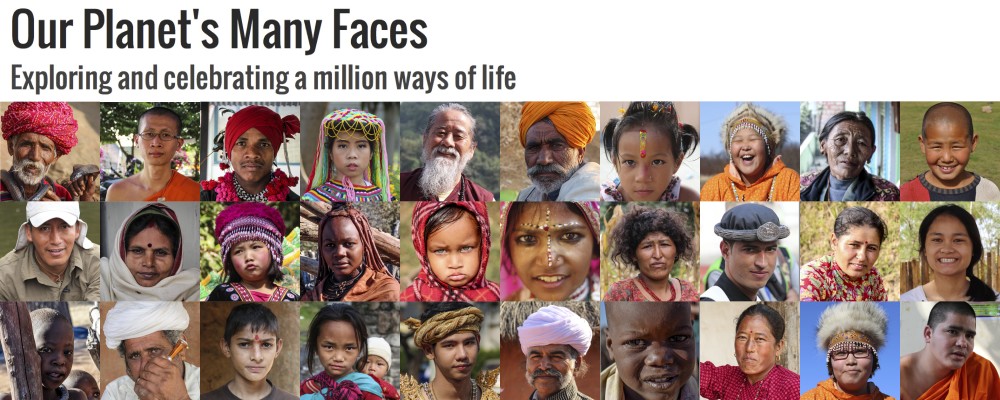
BARIYARPUR, NEPAL (NOV. 28, 2014) A crowd of 2.5 million assembled in the remote, bordertown of Bariyarpur, Nepal leading up to the sacrificial days of Gadhimai Festival on November 28. Known as the largest ritualistic sacrifice of animals in the world, Gadhimai has attracted a fair share of media attention, protest, and animal rights activism in recent days.
Gadhimai is a month-long festival held once every 5 years in Bariyarpur, Nepal, located 160 km south of Kathmandu, near the Indian border. The festival takes place at the Gadhimai Temple, which is named for the Hindu goddess of power. It is estimated that about 5,000,000 people in total will have attended the festival over its entire course.
Dipak Poudel, a hotel manager from Kathmandu, was one man among the crowd on Friday evening. It was his first time attending the festival, and it left an impression on him. “I saw pictures in the news, and I have seen myself many times the sacrifice system. But my thinking has changed since seeing Gadhimai myself,” Poudel explains. He describes the overwhelming impression it made on him, upon entering the gate and seeing, “so many buffalo, lying on the ground.”
On the first day of festival, it is estimated that 6,000 buffalo and at least 100,000 goats and other animals were killed. An estimation of total animal sacrifices has not yet been released, though some anticipate a figure as high as 500,000. In 2009, when the festival was last held, over 250,000 total animals and birds were sacrificed, including 20,000 buffalo.
WARNING: The following footage contains some images that some viewers may find offensive.
In recent months, animal rights activists have protested the festival, criticizing the means of slaughter and inhumane transport of animals to the sacrifice site. They are pleading for the festival to come to an end. Nepali leadership has made statements that they cannot make decisions against the culturally significant event, and that it would not be well received in a nation that is 80% Hindu.
Poudel, however, thinks that culture is not a defense for the festiaval. “The culture is good here, but the system is not good,” he explains.
“That kind of mass sacrifice is not ok for society. One big problem is disease and sanitation. I saw sanitation problems everywhere,” describes Poudel. He observed unclean butchering and cooking areas, as well as open deification areas that resembled, “a small river.” He expressed concern that such problems are unavoidable with such mass numbers of people and animal sacrifices.
“Animal sacrifice is not bad if it is managed well. It’s a strong part of our culture,” Poudel explained, “But mass sacrifices are not ok. It is not a good message to the new generation and to society,” he adds, describing how sacrifices en masse seem to take on a more violent tone. His hope is that, ultimately, the main gathering of Gadhimai would be closed to animal sacrifices in the future, and that families would be encouraged to carry out their sacrifices at home in a more, “meaningful and honest” way.
“I am lucky to see… I saw the festival. But, I never want to see again,” Poudel concludes.
The next Gadhimai festival will happen in November, 2019.
